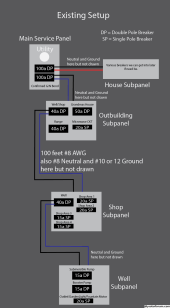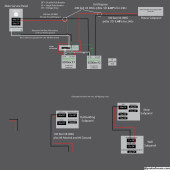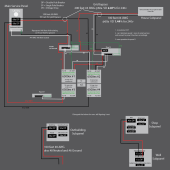Many posts discuss the grounding of the array/pv mount, but I'm wondering about the necessary awg for the inverter ac ground. I know only one is necessary per inverter, and NEC Table 250.122 mentions 10 awg for 60 amps. Since the inverter can only do 54 amp, 10 awg should be enough for the ground on the AC either IN or OUT...right? I'm wondering why I'm seeing so many people run 4 awg for their AC ground? I can understand calculating for long distance and possibly upping the awg for that, but not quite getting 4 awg.
So this plans for fault for that inverter to say a connected breaker subpanel. So from that sub, what would be a good awg for running back to the main panel. Would you plan for two possible faults on two inverters which could go to 104 amps, so 8 awg for 100 amp fault or 6 awg for 200 amp fault? Or are we supposed to plan for a fault during an inrush current event, so 150% or 200% inverter capacity?
Then what if you ran 4 inverters, each of 2 connecting to a different sub, both subs wired to a ground bus in a combiner box back to the main...how many faults would you plan for to figure the ground awg from the bus to main?
I'm basically trying to figure the cost of the ground awg. Thank you.
So this plans for fault for that inverter to say a connected breaker subpanel. So from that sub, what would be a good awg for running back to the main panel. Would you plan for two possible faults on two inverters which could go to 104 amps, so 8 awg for 100 amp fault or 6 awg for 200 amp fault? Or are we supposed to plan for a fault during an inrush current event, so 150% or 200% inverter capacity?
Then what if you ran 4 inverters, each of 2 connecting to a different sub, both subs wired to a ground bus in a combiner box back to the main...how many faults would you plan for to figure the ground awg from the bus to main?
I'm basically trying to figure the cost of the ground awg. Thank you.





